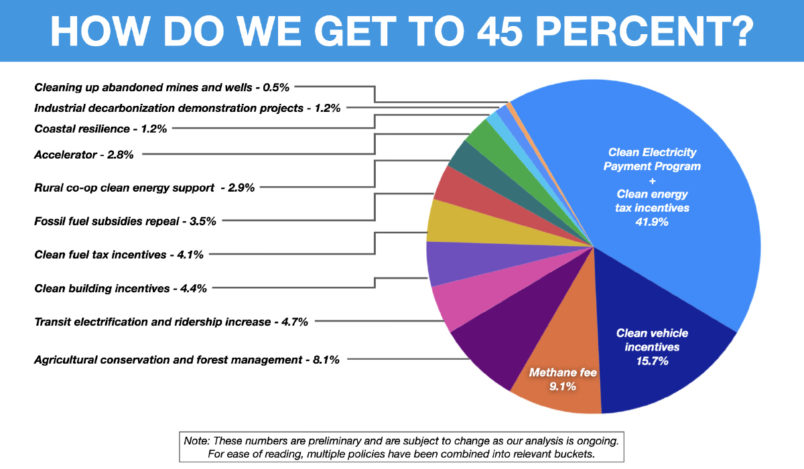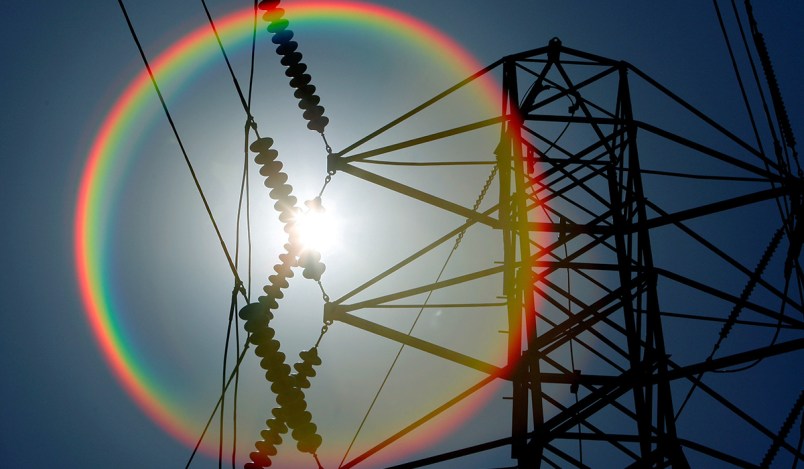When Democrats discuss the climate goals they hope to meet in the reconciliation package, they don’t mince their words: “transformational,” “once-in-a-generation,” “big enough to meet the moment.”
It’s not just a politician’s predilection for hyperbole. Most in the Democratic caucus are acutely aware of both the urgency of the climate crisis, and that the political window to address it is extremely small.
They could lose the House in 2022, a likelihood increased by Republican gerrymandering. A combination of partisan redistricting and restrictive voter laws from GOP state legislatures could then lock them out of power, specifically from the trifecta of the presidency and majorities in both chambers of Congress needed to pass big legislation, for years. The planet doesn’t have that kind of time.
Enter the reconciliation package, which contains a host of climate policies. But the crux of Democratic hopes — the largest slice of the pie — is the clunkily-named Clean Electricity Payment Program, or CEPP, and a suite of separate but complementary clean energy tax incentives that work with it. Crafting the policies has consumed congressional offices and outside advocates alike for months.

Sen. Tina Smith’s office (D-MN), which has been championing the policy, started batting ideas around before the November election. Her staff got to work crafting the policy in earnest on January 6 — not just the day of the insurrection, but also when the race for Georgia’s second Senate seat was called for Jon Ossoff, locking in Democrats’ effective Senate majority and making passing climate legislation a real possibility.
They’ve coalesced behind the idea of “greening up” the electrical grid: making it more — ultimately completely — reliant on clean energy sources. The idea is that, when it comes time to electrify other sectors of the economy like cars, all of that electricity will be generated by an energy sector that produces far fewer carbon emissions than the one on which America currently relies.
In devising this plan, policy wonks took their cue from the states.
“For the longest time, federal policy around climate was consumed by discussion especially around carbon pricing,” Sam Ricketts, cofounder of Evergreen Action, told TPM. “Then we looked at what’s happening in the states — 11 states have 100 percent carbon-free electricity requirements with different timelines, and the policies are working. So we take those tried-and-true policies, turn up the ambition and use federal investments.”
Devising the CEPP has been an experiment in creative thinking constrained by the idiosyncrasies of Senate rules, as a coalition of invested parties constructed a policy to both achieve historic climate goals and survive the Byrd Rule that governs what can be included in reconciliation. The specifics are still in flux, as congressional staff hammers out the legislative language.
What Is The CEPP?
The CEPP is basically a clean energy standard remixed to pass the Byrd Rule, which mandates that everything involved in a reconciliation package must directly impact the budget. Clean energy standards, which are already used by many states, are regulatory — power utilities must meet a certain threshold of electricity production from cleaner sources.
The CEPP takes the same goal of decarbonizing the electrical grid, but gets there with a set of sticks and carrots: penalty taxes for utilities who don’t increase their share of clean energy by a predetermined amount each year, and credits for those who do.
It would be “technology-neutral,” meaning that all “clean” sources count towards increasing that share: hydropower, renewables like wind and solar, and nuclear facilities. The plan would also allow for fossil fuel power plants that manage their emissions through the use of carbon capture technologies.
Knock-On Effects
The reason Democrats and climate advocates have rallied around the policy is not just because it’s tailored to survive reconciliation — it would also have a transformational effect on the country’s climate change-causing emissions. President Joe Biden’s goal is to achieve 80 percent clean electricity by 2030, on track to be 100 percent clean by 2035. Cutting power plant emissions on that scale would accomplish at least half of Biden’s bigger goal, to reduce the country’s economy-wide greenhouse gas emissions by 50 to 52 percent by 2030.
As Ricketts pointed out, greening the electrical grid does critical work on two fronts: zeroing out pollution from the power sector itself, which is responsible for a quarter of all greenhouse gas emissions, but also building out renewable sources of energy to ensure that other sectors of the economy can go clean too. That’s where the tax credits work in concert with the CEPP — as utilities are incentivized to increase the share of their electricity derived from cleaner sources, the tax credits help fund the expansion of less-carbon-intensive energy production.
“It’s the biggest bang for your buck, so we can make sure the juice we swap in for the oil and gas used for cars and appliances is also clean,” Ricketts said.
Watch This Space
The CEPP and its complementary tax credits — which are “vitally important to incentivize new projects and ensure that renewables are the least-cost resource,” Ricketts said — are the beating heart of Democrats’ climate plan.
To work most effectively, the rates of the CEPP’s credits and penalties, along with the annual targets for clean electricity sales, must be sufficiently high. Whether they are will be determined by policymakers in the weeks and months ahead.
There’s also, perennially, the fear that someone like Sen. Joe Manchin (D-WV) from a state with a legacy of coal production could balk at the policy when push comes to shove next month. While the CEPP does make room for fossil fuel plants equipped with carbon capture, that technology is still burdensome and expensive — the clear intent of the policy is to economically squeeze out the dirtier producers as renewable energy sources become built out further and even cheaper to use.
But Sen. Smith has expressed confidence that the CEPP is crafted in a way to keep all 50 senators on board. The country’s largest coal mining union has also endorsed Biden’s energy policies, asking for “good-paying jobs” — like those that would be created by a national explosion in the production of renewable resources — in return.
“After many, many months, we are now on the precipice of being able to move transformational policy through reconciliation,” Ricketts said.







This sounds pretty good. It might actually work. By that, I mean the idea of building out the electricity infrastructure to help supercharge changing other parts of our pollution system.
This should have been done decades ago and this is probably the last chance to do it at a level that will make a difference. Of course, the GQP will oppose it at every opportunity and their intransigence will make the history books, if there is anyone around to write it.
The majority of all Americans should be for this. The idea that Republicans would be against saving their own environmentally threatened existence is consistent with their stance on COVID:
Their stubbornness kills more than just them…it kills US, too
Pretty dismal projection. Good thing they will be using data already a couple of years old. They keep using Trumpian policies and methods that lost them the election last year. Do you really believe that the policies will look better in 2022?
The Press in a feeding frenzy as usual. Lord you people are depressing.
We need to work on that. But I might also add that there was too much casual and divisive thinking in 2016 and it has permanently altered the emotional outlook of a lot of people.
The division within the Democratic Convention of 2016 was juvenile and stupid. Especially when juxtaposed with the menace we faced with a criminal/sociopath like Donald Trump as a Presidential opponent.